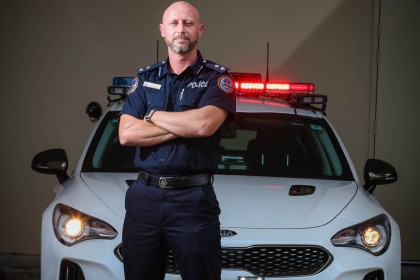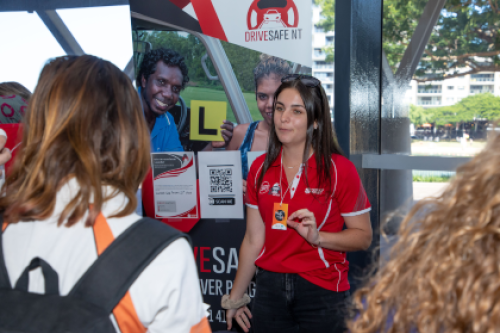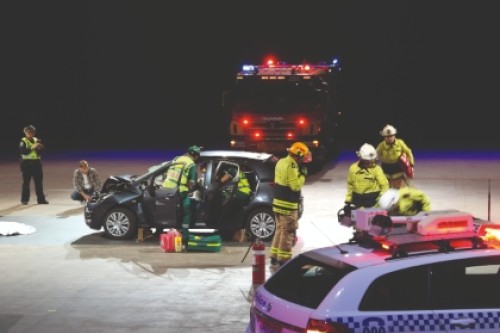
With one hand planted on the steering wheel, you fumble for your mobile phone with the other. That’s your first mistake. Your eyes dart down for a split second and quickly back up to the road. Second mistake. Don’t be L8, the message reads. Mistakes happen and, if you’re lucky, you’ll get a second chance. Unfortunately, luck isn’t always on our side.
It’s nothing you haven’t already heard; using your mobile phone behind the wheel is not only dangerous, it’s against the law. For many motorists, the message still isn’t getting through.
In 2019 there were 738 mobile phone offences recorded on roads in the Northern Territory, and that’s just those who were caught. There were also 18 learner and provisional licence holders caught using their phone while driving.
You’re four times more likely to have a car crash if you’re touching your phone while you’re driving. Statistics like these should be enough for motorists to put their mobile in the glove box and leave it there. Out of sight, out of mind, right? Sadly, pleas from the police are being ignored.
ON THE FRONT LINE
NT Police Superintendent of Road Policing and Regional Support, Neil Hayes, says it’s common to see motorists using their mobile phone while driving.
“We’re seeing it far too often and people aren’t heeding our message,” Hayes says.
“I pull up to the traffic lights and look around and people’s heads are going down as they look at their mobile phone in their lap.
“Just because you’re stopped at the traffic lights, it doesn’t mean you shouldn’t be concentrating and paying attention to your surroundings.”
Using your mobile phone while driving is dangerous and can hit your back pocket as well.
People caught using their mobile phone, whether they’re texting or talking, face a $500 fine and three demerit points.
Hayes says driving distracted can cause catastrophic damage on the road.
“Your distraction on the road may have severe consequences for you, but it can also [affect others],” he says.
“It can cause crashes and injuries for innocent parties who are simply going about their business.”
Rural areas are particularly prone to high-speed crashes, with vehicles running off roads.
Following a crash, investigators check drivers’ phone data to see whether they were using their mobile while driving.
“At 130km/h it only takes a second to drift to the left of the lane, and as soon as you’re off the road, there are rocks and trees and people roll their vehicles,” Hayes says.
“We have far too many single-vehicle rollovers. Fatigue and distraction are major contributing factors in these crashes.”
Hayes advises motorists to put their phone somewhere out of reach, so they’re not tempted to look at it while they’re driving.
THE FATAL FIVE
There are four other contributing factors to fatal collisions on our roads.
DRINK AND DRUG DRIVING
Drink driving is the number one factor, contributing to 30 per cent of fatal crashes in Australia. If you’re drinking, plan ahead and consider nominating a designated driver, organising someone to transport you to and from your venue, or staying overnight.
SPEEDING
Exceeding the speed limit by just 5km/h can double your chances of being involved in a casualty crash. You should always monitor your speed and stay within the speed limit.
Adjust the speed to suit weather, traffic and road conditions.
SEATBELTS
Unrestrained drivers and passengers are eight times more likely to be killed in a road crash.
Make sure you wear your seatbelt correctly and that it’s not twisted.
DANGEROUS ROAD USERS
Dangerous road users put everyone at risk and include those people who have a blatant disregard for the road rules.
Breaking any road rule can result in a serious crash.
Image: NT News




